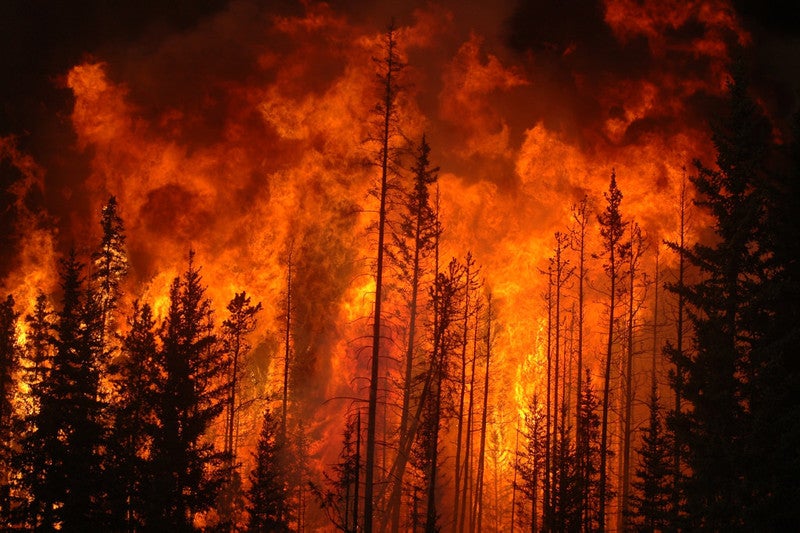How Do I Survive a Forest Fire?

'Forest fire (Photo by Cameron Strandberg)'
Forest fire (Photo by Cameron Strandberg)
Wildfire season’s coming up. How can I escape if I get caught up in a fire? Is there any way I’d be able to survive?
– Hannah Hester via email
Wildfire spreads, well, like wildfire. But you can survive a sneak-attack blaze if you don’t wet your britches. For two reasons. First, panic causes hyperventilating, and sucking superheated wind will kill you a lot faster than a couple of burns will. Second, urine is a great conductor, and wetting your clothes means you’ve just put on a layer of boiling water. Unless you’re taking cover in a lake or stream, keep those threads dry, says EMT and wildland firefighter Keith Stoner
Same goes for inhaling through a wet bandana. That’ll earn you lip blisters, not a cool breath. Though a rag can be useful for filtering airborne ash, cloth isn’t a fine enough filter for smoke, and the particles will clog your lungs with or without it. If the fire’s coming and things are starting to heat up, hold your breath. That first gasp of superheated air kills more folks than smoke inhalation does. A surrounded firefighter will put up a heat-reflecting shelter and dig a small hole in the dirt to breathe through, but without the proper equipment, you’re better off sticking to plan A: retreat.
If you’re on a hill, hightail it down, Keith advises. Flames lick upward and can climb slopes faster than you can. Keep an eye on the fuel around you. Grasses and dry pine needles will burn up quickest, whereas leafy greens and downed trees take longer. Try to head toward streams, low areas, or, as a last resort, ashy spots that have already burned out.
Embers can also jump canyons, so don’t assume you’re safe firegazing from across a rim. If you see smoke or a horizon blushing orange, take the hint and head home. That glow will give you some pretty sunsets, but the glamor ends when you’re running for your life.
Got a question for Den Mother? Email it to denmother@backpacker.com.